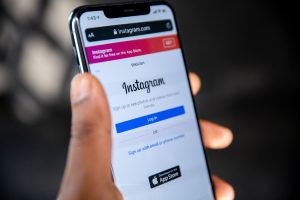Instagram Callout Pages: Estee Laundry and Diet Prada
Published on October 5, 2020, at 8:00 p.m.
by Tralene Hunston.
It’s undeniable that social media changed the dynamics of how organizations interact with their consumers, shifting from traditional one-way communication to the highly interactive two-way communication models that we see today. Public relations practitioners have become accustomed to this new model and increasingly plan their strategies and tactics around it. But what happens when the public uses social media to specifically hold organizations to the ethical standards that consumers desire, even when those desires do not necessarily match the organizations themselves?
The needs of the public are continually changing as societal norms shift. As technology advances, the steady flow of information available to the public enhances — and intensifies the volume of those seeking information.
Today’s society demands immediacy and has placed a focus on ethics, particularly with resolving issues they view as systemic and oppressive. Users have taken to social media to demand organizations respond to issues they find concerning.

The Instagram accounts Estee Laundry (esteelaundry) and Diet Prada (diet_prada) are dedicated to calling out inconsistencies and ethical concerns within brands in the fashion and beauty industries. These accounts are unafraid to publish scathing critiques and request their followers to join in and share their perceptions. This fearlessness gained both accounts popularity, with Estee Laundry amassing 180,000 followers and Diet Prada leading with a dedicated following of 2.3 million, as of Oct. 4, 2020.
Each account focuses on either the beauty or fashion industry, with posts critiquing everything from advertising and products themselves to the political donations of company shareholders. COVID-19 added a new compelling layer to the variety of topics each account chooses to share. The accounts began to share the concerned messages from employees of popular brands anonymously, as well as exposing internal communication memos not meant for the public view. This exposure provided an insight internal to the brand that the consumer would otherwise not have, while also pointing out inconsistencies of what the organizations release to the public versus internal practices.
Concerns over “cancel culture” are growing as pressure is placed on mainstream institutions, particularly with the realization that brands are not always driving influence; influence is now being driven by the crowd. Public relations practitioners must take note of this trend and realign their strategies and tactics to resolve these concerns.
Those working in the PR industry should understand the profound implications of dedicated-critic, social media accounts and how they can diminish consumer relationships with individual brands. Commonplace practices of monitoring the news may not be enough. Social listening may need to be implemented in organizational social media marketing plans, providing a tool to understand the consumer climate toward companies’ brands.
Lastly, organizations must understand how and why their brands may be highlighted as having a negative impact on their publics. Understanding and anticipating reactions from the public can reduce the opportunity for a crisis. Still, it cannot alleviate all crises, particularly if the public perceives the public relations response as purely performative. Standing by an organization by ensuring that its communication has an ethical foundation, grounded with empathy and honesty, is how industry professionals should proceed in order to enable public trust.




